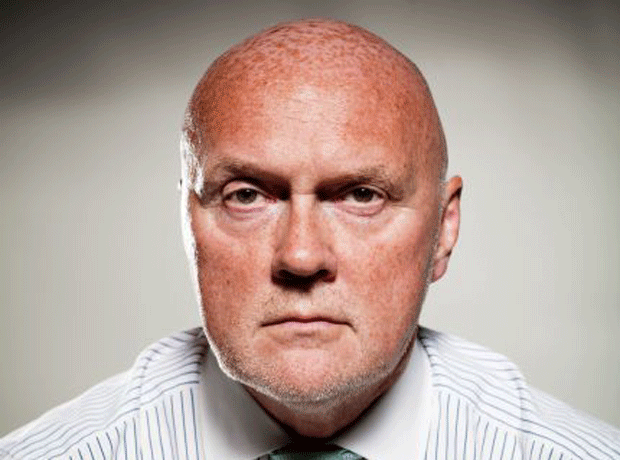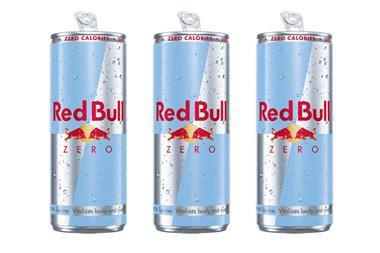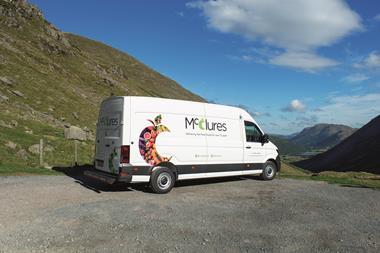Siân Harrington explores how Asda’s centralised policy makes effective use of the retailer’s media opportunities
The Asda Media Centre, near the Leeds head office, has five employees - four with advertising backgrounds and director Sarah Brookfield coming from Asda itself, after working on the Asda magazine.
“We decided to outsource because we wanted a media expert,” says Brookfield of the retailer’s decision to contract the centre out to advertising agency Publicis. “Instore media used to be under different people looking at different things.”
So far, the move has been welcomed. “It’s as close to common sense as you can get,” says Martin Kingdon, director general of industry association POPAI. “Asda knows a lot about its customers but zip about media.”
Peter Knowland, client services director and head of new business at advertising agency Abbott Mead Vickers BBDO, agrees. “It is encouraging because it shows that Asda sees it as a legitimate medium rather than just a way of getting money. And if you think you have media space to sell, it makes sense to subcontract to someone better,” he says, although he does wonder if a media sales house would be a more logical home.
Brookfield says one main benefit of Asda’s media model is that it sits between corporate marketing, trading, research, the sales houses and agencies.
“We give feedback from suppliers to corporate marketing and trading. For example, if suppliers all say they want a shelf-edge presence we have the ability to do it. We can help bring different brands together for campaigns - we can help suppliers work together who could not afford to buy the space on their own.
“As trading is on board, we also have more chance of landing what is agreed, which helps suppliers who are worried about implementation problems.”
The centre offers 14 media opportunities with plasma screens and supplier-funded radio coming on stream this month (The Grocer, August 21, p5). The idea is to drive sales through the most effective use of Asda’s media opportunities and to ensure the right message is communicated in the right medium. “In the What’s New In Asda leaflets it is a price message, while the magazine is about quality and benefits,” says Brookfield.
For suppliers the benefit will come if they can get greater brand communication in the retailer, previously difficult because of Asda’s price-dominated message.
Brookfield concedes that Asda wants suppliers’ trade investment to go into price. “We are looking for a separate budget that may have gone elsewhere,” she says.
But, she stresses, Asda recognises it needs to offer opportunities that are relevant for brands as well. And she adds: “If it is about delivering value we need bespoke opportunities.”
Since launching the centre, Brookfield and her team have presented to brand directors, marketing teams and Asda business unit directors at all the major suppliers. “The feedback from suppliers is that we are helping. Everyone we have presented to has given us a brief to work on.”
A further two people will be taken on by the end of the year and two more next year as the centre expands. Asda is also taking on its first head office media manager, having poached Kathryn Boast from Tesco.com.
But Brookfield doesn’t expect plain sailing. “We need to be rigorous. If we don’t see return on investment it will be the end of the media centre,” she says. “But at the moment Asda sees us as no-brainer.”
Working for Asda >>How the Media Centre fulfils its mission
Corporate marketing: asks the media centre to evaluate new media, research it and produce the business case, a recent example being the plasma screen trial. The centre can feed back suppliers’ views.
Corporate marketing owns the media and controls the corporate marketing calendar - events like Father’s Day and Back to School.
Trading: The media centre helps it with own label marketing - analysing the best value for spend - and supplier launches. It is able to provide a bigger picture, linking different categories - for example, putting chilled snacking and BWS together for Euro 2004.
Trading comprises buyers and trade marketers who work with suppliers.
Research: The media centre has access to Retail Link sales data as well as its own budget to research in areas which lack proper data and analysis.
Sales houses: The centre can act as a planning and project manager, helping brands put proposals together based on requirements and then passing on the booking to sales houses if required. These sales houses comprise: The Media Vehicle for trolley ads; Maiden for outdoor; CPM for sampling; Blueprint for the Asda Magazine; Grattapalm for What’s New in Asda; Publicis for plasma, and media agency Carat.
Agencies: The centre can put together concepts or design packages based on agency requirements.
These can be bespoke if the concept is right for the supplier and for Asda.
The Asda Media Centre, near the Leeds head office, has five employees - four with advertising backgrounds and director Sarah Brookfield coming from Asda itself, after working on the Asda magazine.
“We decided to outsource because we wanted a media expert,” says Brookfield of the retailer’s decision to contract the centre out to advertising agency Publicis. “Instore media used to be under different people looking at different things.”
So far, the move has been welcomed. “It’s as close to common sense as you can get,” says Martin Kingdon, director general of industry association POPAI. “Asda knows a lot about its customers but zip about media.”
Peter Knowland, client services director and head of new business at advertising agency Abbott Mead Vickers BBDO, agrees. “It is encouraging because it shows that Asda sees it as a legitimate medium rather than just a way of getting money. And if you think you have media space to sell, it makes sense to subcontract to someone better,” he says, although he does wonder if a media sales house would be a more logical home.
Brookfield says one main benefit of Asda’s media model is that it sits between corporate marketing, trading, research, the sales houses and agencies.
“We give feedback from suppliers to corporate marketing and trading. For example, if suppliers all say they want a shelf-edge presence we have the ability to do it. We can help bring different brands together for campaigns - we can help suppliers work together who could not afford to buy the space on their own.
“As trading is on board, we also have more chance of landing what is agreed, which helps suppliers who are worried about implementation problems.”
The centre offers 14 media opportunities with plasma screens and supplier-funded radio coming on stream this month (The Grocer, August 21, p5). The idea is to drive sales through the most effective use of Asda’s media opportunities and to ensure the right message is communicated in the right medium. “In the What’s New In Asda leaflets it is a price message, while the magazine is about quality and benefits,” says Brookfield.
For suppliers the benefit will come if they can get greater brand communication in the retailer, previously difficult because of Asda’s price-dominated message.
Brookfield concedes that Asda wants suppliers’ trade investment to go into price. “We are looking for a separate budget that may have gone elsewhere,” she says.
But, she stresses, Asda recognises it needs to offer opportunities that are relevant for brands as well. And she adds: “If it is about delivering value we need bespoke opportunities.”
Since launching the centre, Brookfield and her team have presented to brand directors, marketing teams and Asda business unit directors at all the major suppliers. “The feedback from suppliers is that we are helping. Everyone we have presented to has given us a brief to work on.”
A further two people will be taken on by the end of the year and two more next year as the centre expands. Asda is also taking on its first head office media manager, having poached Kathryn Boast from Tesco.com.
But Brookfield doesn’t expect plain sailing. “We need to be rigorous. If we don’t see return on investment it will be the end of the media centre,” she says. “But at the moment Asda sees us as no-brainer.”
Working for Asda >>How the Media Centre fulfils its mission
Corporate marketing: asks the media centre to evaluate new media, research it and produce the business case, a recent example being the plasma screen trial. The centre can feed back suppliers’ views.
Corporate marketing owns the media and controls the corporate marketing calendar - events like Father’s Day and Back to School.
Trading: The media centre helps it with own label marketing - analysing the best value for spend - and supplier launches. It is able to provide a bigger picture, linking different categories - for example, putting chilled snacking and BWS together for Euro 2004.
Trading comprises buyers and trade marketers who work with suppliers.
Research: The media centre has access to Retail Link sales data as well as its own budget to research in areas which lack proper data and analysis.
Sales houses: The centre can act as a planning and project manager, helping brands put proposals together based on requirements and then passing on the booking to sales houses if required. These sales houses comprise: The Media Vehicle for trolley ads; Maiden for outdoor; CPM for sampling; Blueprint for the Asda Magazine; Grattapalm for What’s New in Asda; Publicis for plasma, and media agency Carat.
Agencies: The centre can put together concepts or design packages based on agency requirements.
These can be bespoke if the concept is right for the supplier and for Asda.



















No comments yet